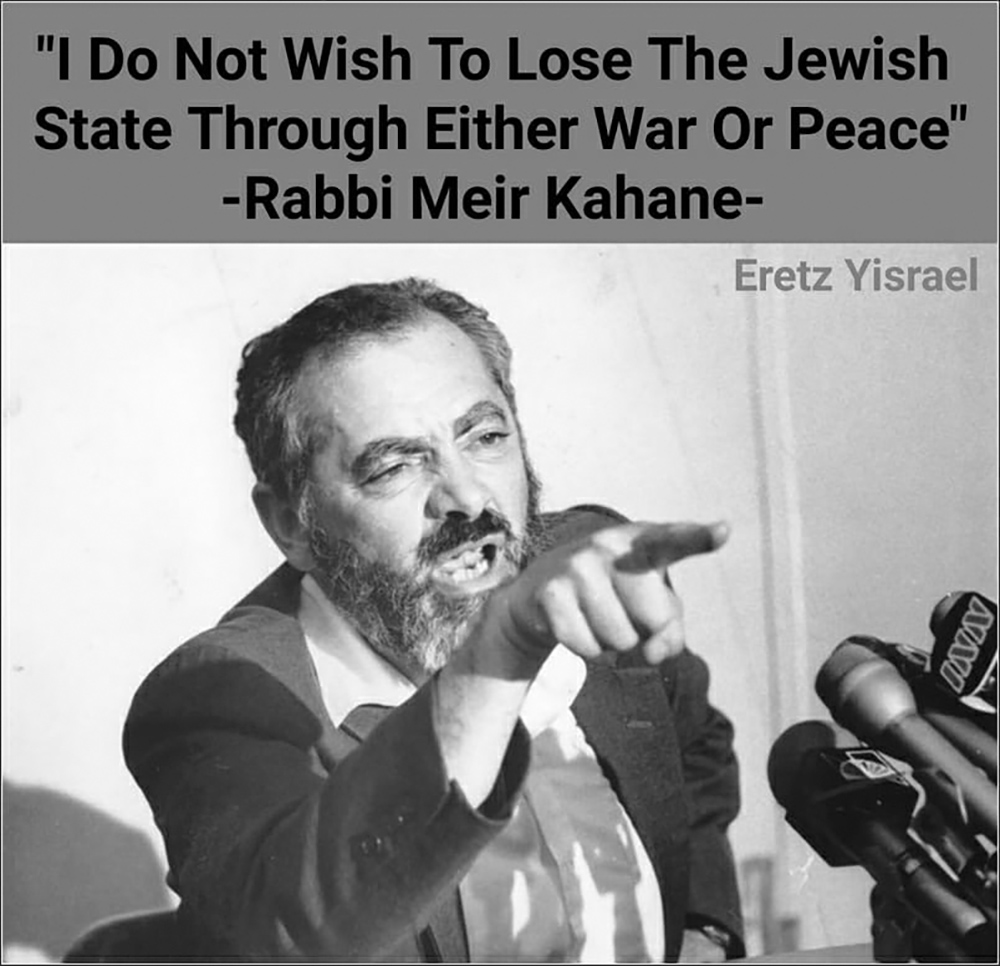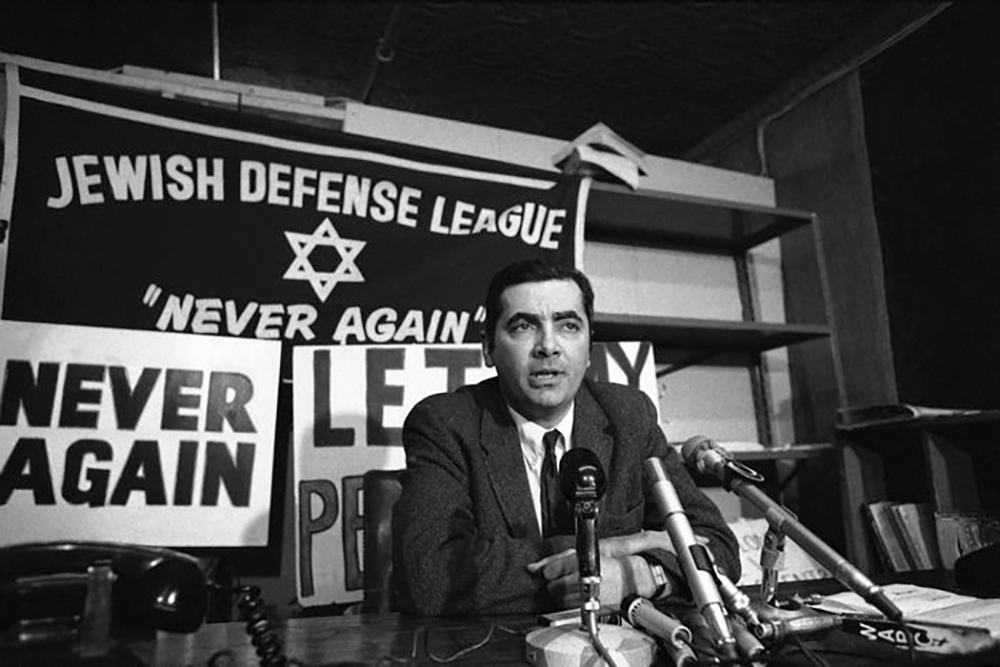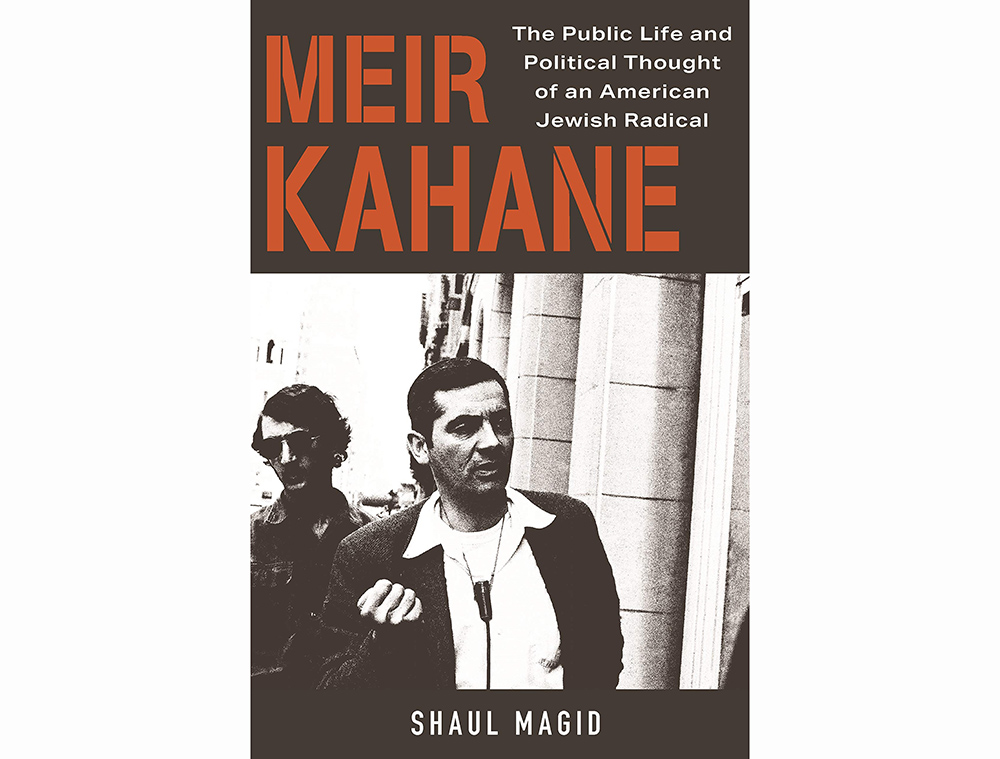By: Meir Jolovitz
This past week, as part of the prepublicity for the most recent of a series of books that have been written during the past thirty-five years about Rabbi Meir Kahane, Internet sites dedicated to Israeli or Jewish affairs offered their readers a new invective, a preview of a diatribe masked as scholarship. Three decades after the murder of the controversial rabbi, the intent, quite transparent, was to disrespect and disgrace the man and his memory. In doing so, it was necessary to abuse the truth. About Kahane. And “Kahanism”.
The most recent manifestation of several previous shoddy, second-rate studies was the release of Shaul Magid’s Meir Kahane: The Public Life and Political Thought of an American Jewish Radical. The Dartmouth College professor, who is also affiliated with the Shalom Hartman Institute of North America, presents us with a 296-page assault of a man whose place in modern Jewish history will long outlive the latest attempt at armchair psychiatry. For Magid, given all the prearranged publicity, the book kills three birds with the same stone: it satisfies his need to ‘publish or perish’ – hopefully enough to help pay the mortgage. It also keeps him relevant. The speaking invitations are coming in.

Let’s give credit where it is due. Magid is no dummy. Well, sort of. He knows enough to target a reading audience who know neither the real history of radical Jewish politics of the 1960s, 70s and 80s America, nor of the nationalist politics in Israel from 1970 through 1990. His study – of a man and his impact – offers a portrait that works only if one is indeed unaware of the political, social, and psychological dynamics that fueled that generation of political activists – and their movement.
Shaul Magid’s work is replete with historical mistakes. Facts that are simply not. Space prohibits a detailed cross-examination which would readily expose a second-rate research whose conclusion was already known. The author’s solution: reverse engineer, by describing the “historic facts” in such a manner that any reasonable reader will see how they corroborate the thesis. Rabbi Meir Kahane was a radical. He was anti-establishment. He hated to see the Jew as victim. And he employed the bitter memory of a Holocaust that raged when too few acted. He too-often saw the world as black and white, and he responded accordingly, and angrily. He became the resident militant rabbi against an American backdrop whose landscape had become politically-charged. True, True, And true. In the face of societal and political issues affecting Jews, if Rabbi Meir Kahane did not exist – someone needed to invent him.
And, it seems, if one couldn’t find an author to castigate him – someone needed to invent one. Every number of years. Now, we have the most recent iteration with the publication of Meir Kahane: The Public Life and Political Thought of an American Jewish Radical.
Rabbi Meir Kahane was indeed controversial. Because he needed to be. Because no other American Jewish spokesman gave a damn about the growing anti-Semitism that targeted so many Jews in the streets of New York. And because too few others had addressed the issue of the persecution of Soviet Jewry for fear that they would upset those establishment hypocrites who preferred quiet diplomacy. The same diplomacy exercised by Franklin Roosevelt’s court Jews.
The problem that the rabbi confronted then – more than fifty years ago when he established the Jewish Defense League – was the trouble he caused when his actions made noise. It was a noise that needed to be heard.

Of course Rabbi Meir Kahane wasn’t the only innovator among Jews who stood up, historically, to rebel against anti-Semitism. But he was a voice representing a small minority – of another minority. As others before him had been. His heroes were Ze’ev Jabotinsky, Yosef Trumpledor, Menachem Begin, Shlomo Ben Yosef, Dov Gruner, Meir Feinstein, and their compatriots of the Irgun and Lehi in Eretz Yisrael. It was their memory that motivated him – this too-small select group of modern Jewish warriors whose names were sadly unknown, or unspoken, in too-many Jewish homes. Certainly not in America. It was not, as Magid’s book would intimate, some psychobabble about the Black Panthers in New York or Chicago. For the rabbi – not yet a radical – it was about Jews standing up to be counted. However few.
But Jewish leadership needed to attack him – to vilify him – because if he was right, then they were invariably wrong.
We recall that Israel’s first Prime Minister David Ben-Gurion, in the pre-State days, had denounced Ze’ev Jabotinsky as ‘Vladimir Hitler’. Not because Jabotinsky was, as other’s had argued, history’s most misunderstood Zionist. It was because his methods were considered extreme (read: unpopular, and sometimes militarist) by the Jewish establishment. And of course, tragically, history proved him right. Yes, Jabotinsky was right.
In Israel – the exploits of Rabbi Kahane in America were viewed, in the circles that mattered, as brazen. And heroic.
In the Soviet Union – the exploits of Rabbi Kahane and his JDL “hoodlums” were seen as brazen. And heroic. In the poor sections of New York – where no ADL mouthpiece ever walked – JDL leader Rabbi Kahane was seen by the frightened and forgotten senior citizens as brazen, and heroic. But, in the ivory towers that housed the opulent offices of the American Jewish leaders – he was seen as brazen; and the enemy.
Yes, Rabbi Meir Kahane was welcomed as somewhat of an anomaly when he made Aliyah in 1971. He was unlike the Woody Allen character than many Israelis thought personified most American Jews. In fact, he was asked by Menachem Begin to write the forward to his book The Revolt when it was republished in 1972. He was later offered a place with Likud. But – he was his own man – not willing to be subservient to any party line. Instead, he founded his own party – Kach. Let the amateur psychiatrists chew on that as well – maybe in another book.
Shaul Magid’s book is a screed shrouded as some intelligent study. Of a man. And his ideology. It is not. What he has done instead is join the chorus of voices – adding his to the aforementioned books that demonized the rabbi – in order to raise his hand in affirmation: yes, Rabbi Meir Kahane was a fascist. How utterly idiotic. If ever, in the post-Holocaust decades, there existed an anti-fascist, it was the rabbi. It should be noted that Magid seemed to ignore the fact that Rabbi Kahane’s call to combat the American Nazis who marched in Chicago in June 1978 was met with the rabbi’s admonition: “You do not ignore Nazis; you do not debate Nazis; you smash Nazis.” You might be right in assuming that ‘smash’ was a euphemism. By the quintessential anti-fascist.
The sixth paragraph of Magid’s Introduction to Meir Kahane: The Public Life and Political Thought of an American Jewish Radical begins with this: “I never met Meir Kahane, but for some years I inhabited a world where he was ubiquitous.” No, he never did meet him. Nor did he ever understand him. Not even three decades after the Jewish world lost a very special man. The voice of “Never Again.” One did not have to labor through 296 pages of pseud-psychiatry to understand that.
Thirty-one years after the rabbi was murdered, the hostility in Israel – between Arab and Jew – is very much what Rabbi Kahane had warned would happen. When he was banned from running for the Knesset in 1988, when the polls predicting an almost unprecedented rise in power after his only term the session before, he warned the plenary, as he often did the media: You will have either Kahane, or Arafat, in this Knesset.
Today – Israel is led by a Left-leaning government that has as part of its coalition several “Arafats”. Sadly, the rabbi was so often right.
Rabbi Kahane’s name had become synonymous with Israeli right-wing politics. “Extremism,” some called it. To be certain, it rendered a new terminology to Israel’s political lexicon: “Kahanism.”
In Israel today, given a very hostile environment, there are two political expressions, both having made their mark splashed as graffiti on walls, shouting two very different messages. The first: “Kahane Tzadak!” Kahane was right! The other, in Arabic: “Palestine: From the river to the sea.” From the Jordan to the Mediterranean. Israel eradicated. We can safely assert that the latter cry certainly seems to confirm the former. Yes, Rabbi Kahane was right.
Meir Kahane: The Public Life and Political Thought of an American Jewish Radical is a phantasmagoric record of a political personality who represented everything the author could not understand. Putting aside the disagreements (another euphemism), it comes down to one simple divergence of mindsets. It was the issue that best defined the philosophical underpinnings of Rabbi Kahane’s call for the transfer of Arabs out of Israel. It was the reason he was even more controversial in Israel than he had been in the United States. It was the choice of Zionism or democracy.
Rabbi Meir Kahane posed one question that others refused to touch. It was a question he posed when most demographic studies had predicted that the exceptionally high Arab birthrate would one day create a threat to Israel. To paraphrase Yasir Arafat: If not by bullets, then by babies. If having to choose between Israel as a Zionist state, with a Jewish majority always, or a democratic state, with a risk of an Arab majority – which indeed do you choose? It was a question whose answer stuck in the throat of uncomfortable Jews.
The conclusion for this author was therefore inevitable: Rabbi Meir Kahane was a radical, militant, fascist, non-compromising, self-promoting, leader of a Jewish terrorist ideology. Hey, let’s write a book – as the thirty-first Yahrzeit approaches. Academic drivel.
Rabbi Kahane was an iconoclastic firebrand who left his mark wherever he walked or whenever he talked. And they will never forgive him. Like Jabotinsky, a generation-and-a-half before him, he saw things that others could not. And as was true of Jabotinsky, he was branded a “pariah” by the established Jewish world, which wanted him so much – to simply go away. He would not. He was murdered in November 1990. In New York.
A quick story, circa 1982. Rabbi Kahane had just concluded a very powerful speech to an audience 500-strong at Queens College. During the Q&A, a middle-aged woman stood up and applauded the rabbi for the speech, and more so, for his remarkable success in having publicized the fight for Soviet Jewry the way he had addressed the issue of anti-Semitism in NY a decade before. But, she asked, did he have to be so bombastic with his public style? His response: “Lady, I have been working on developing this image for 15 years – please don’t ask me to change it now.”
Shaul Magid would never understand.
Meir Jolovitz is a past national executive director of the Zionist Organization of America, and formerly associated with the Institute for Advanced Strategic and Political Studies.




